A couple of weeks ago during CES 2020, Samsung took the wraps off the latest iteration of its T-series portable SSD line, the Samsung T7 Touch. The newest portable SSD in the South Korean giant’s portfolio comes with embedded PCIe NVMe flash storage for the first time, resulting in faster peak speeds compared to previous entries in the lineup.
Additionally, the T7 Touch comes with a built-in solid state fingerprint security scanner to complement the password security that’s been present in previous generations of the T-series lineup.
With the entry-level 500GB model coming in at the same $130 starting price as its predecessor, should you consider the Samsung T7 Touch as the next portable SSD companion for your MacBook or iPad Pro? Watch our hands-on video review for the details.
Specifications
- 500GB, 1TB and 2TB varieties
- Available in either black or silver color options
- Transfer speeds up to 1050MB/s read and 1000 MB/s write
- USB 3.2 Gen 2 connectivity (up to 10GB/s)
- UASP (USB-attached SCSI Protocol) support
- Bus-powered, no need for power connectors
- Includes USB-C to USB-C cable and USB-C to USB-A cable
- Built-in fingerprint reader with Motion LED status indicator
- Aluminum unibody design
- Shock resistant to withstand drops up to 6.6 feet
- Optional data protection with software (password and fingerprint recognition)
- AES 256-bit hardware encryption
- Dimensions 85 x 57 x 8.0mm
- Weight 58g
- Limited 3-year warranty
- Samsung T7 Touch (1TB) Black
- Samsung T7 Touch (1TB) Silver
- Samsung T7 Touch (500GB) Black
- Samsung T7 Touch (500GB) Silver
Video: Samsung T7 Touch Review
Subscribe to 9to5Mac on YouTube for more videos
Samsung T7 Touch form factor versus the Samsung T5
The first thing I did after unboxing the Samsung T7 Touch was compare it to the Samsung T5 (review). I use the Samsung T5 almost every day, and I think its form factor is ideal for MacBook Pro and iPad Pro usage. The Samsung T7 Touch is similar in size to the T5, but it is a tad bit longer, while at the same time losing some of the thickness of the T5.
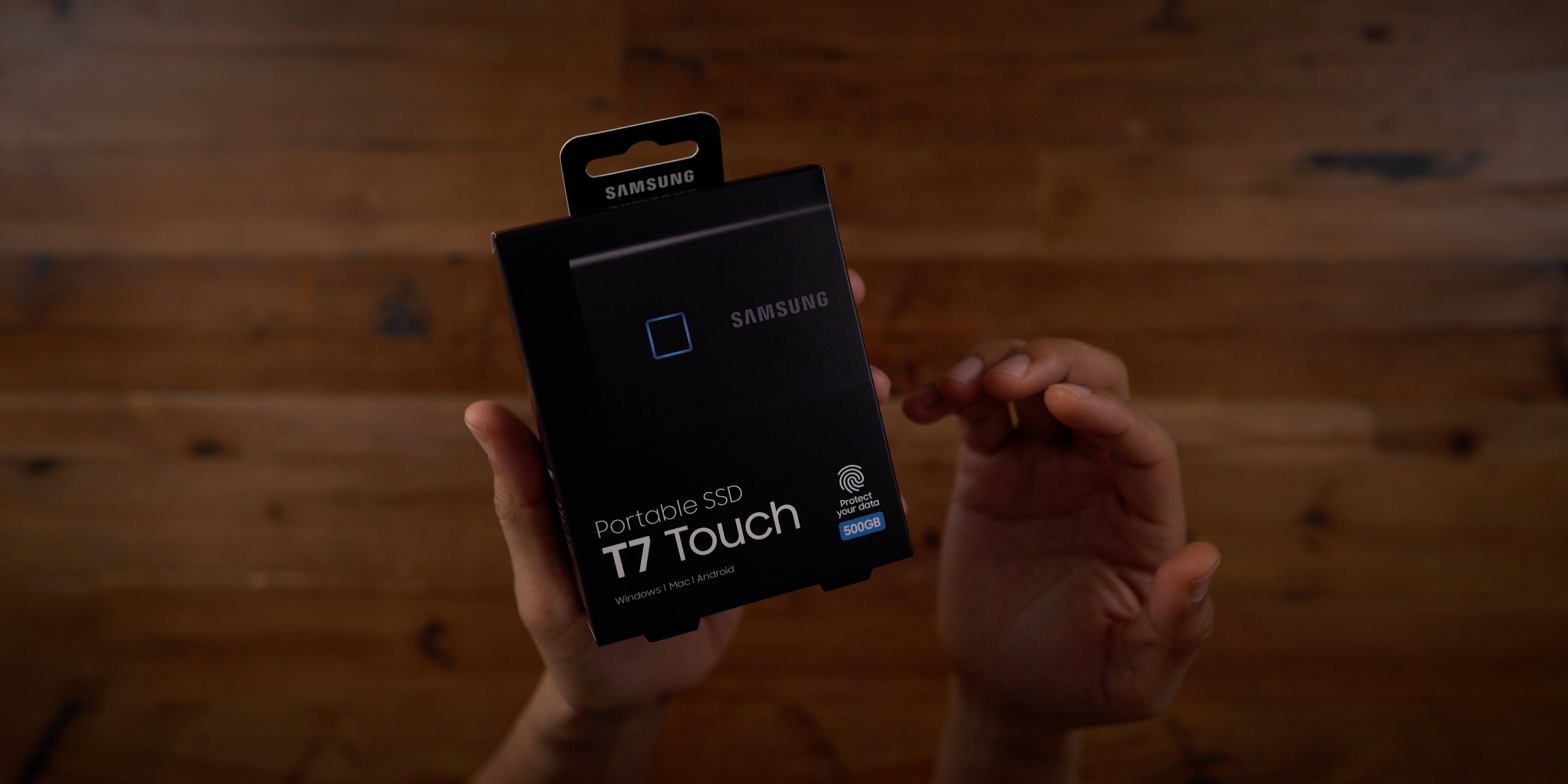
Samsung notes that the T7 Touch is similar in size to a typical credit card, and I 100% agree. I put it side by side with my Apple Card and found them to be almost identical in size from a length and width perspective. Obviously, the T7 Touch is thicker than a typical credit card, but that goes without saying.

So while the Samsung T7 feels a little bit larger in the hand thanks to about 10mm in extra width compared to its predecessor, the device is still easily pocketable. Weight-wise, the T7 Touch is just 7 grams heavier than the Samsung T5, and considering its flatter, spread out form-factor, the extra weight is basically indiscernible.
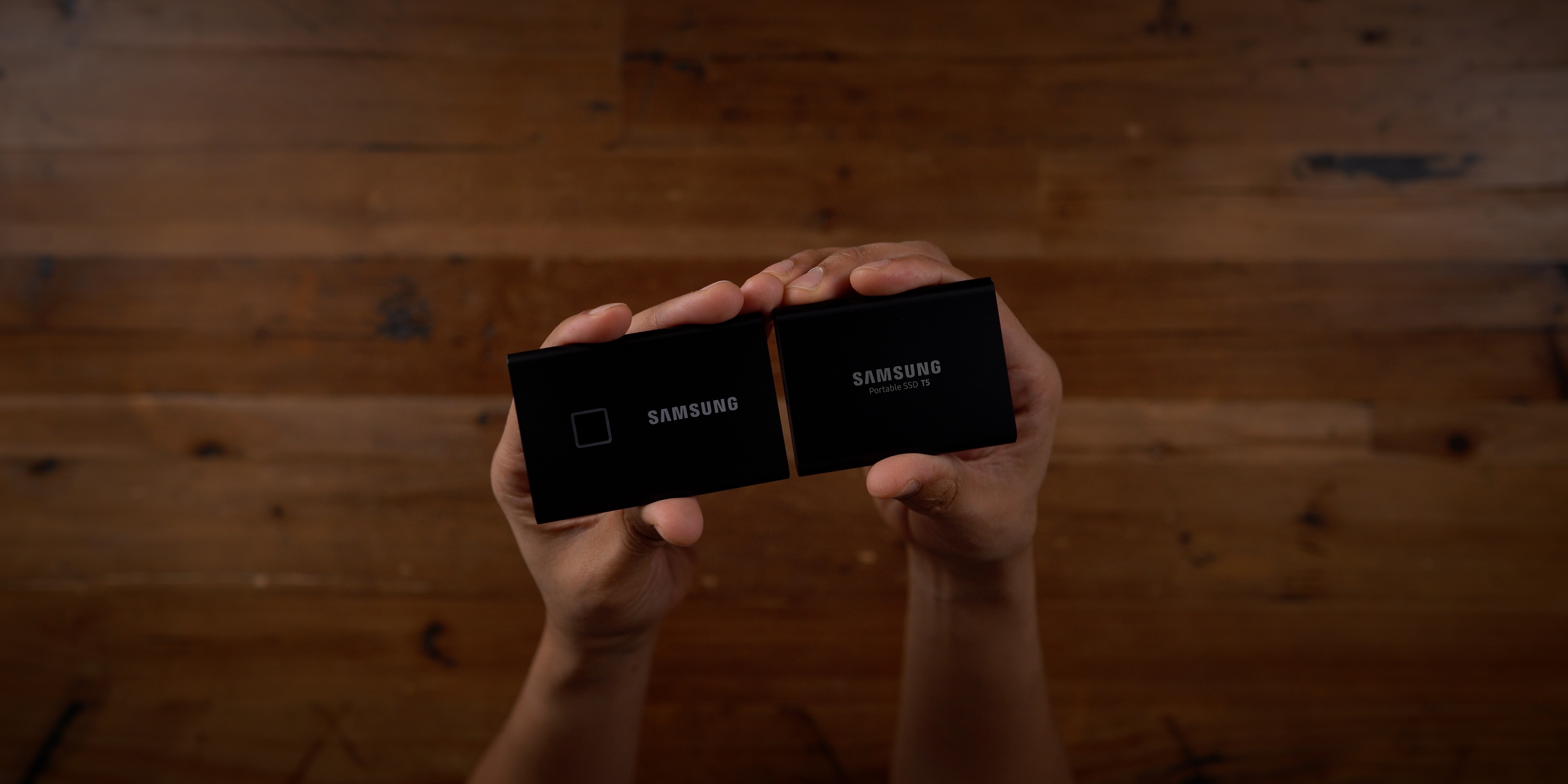
Samsung T7 Software
Formatted with ExFat out of the box, the Samsung T7 Touch can immediately be used in either a Mac or Windows environment. Included with the drive (and available for download) is Samsung’s Portable SSD application, which is required for you to manage the drive’s features and security settings.
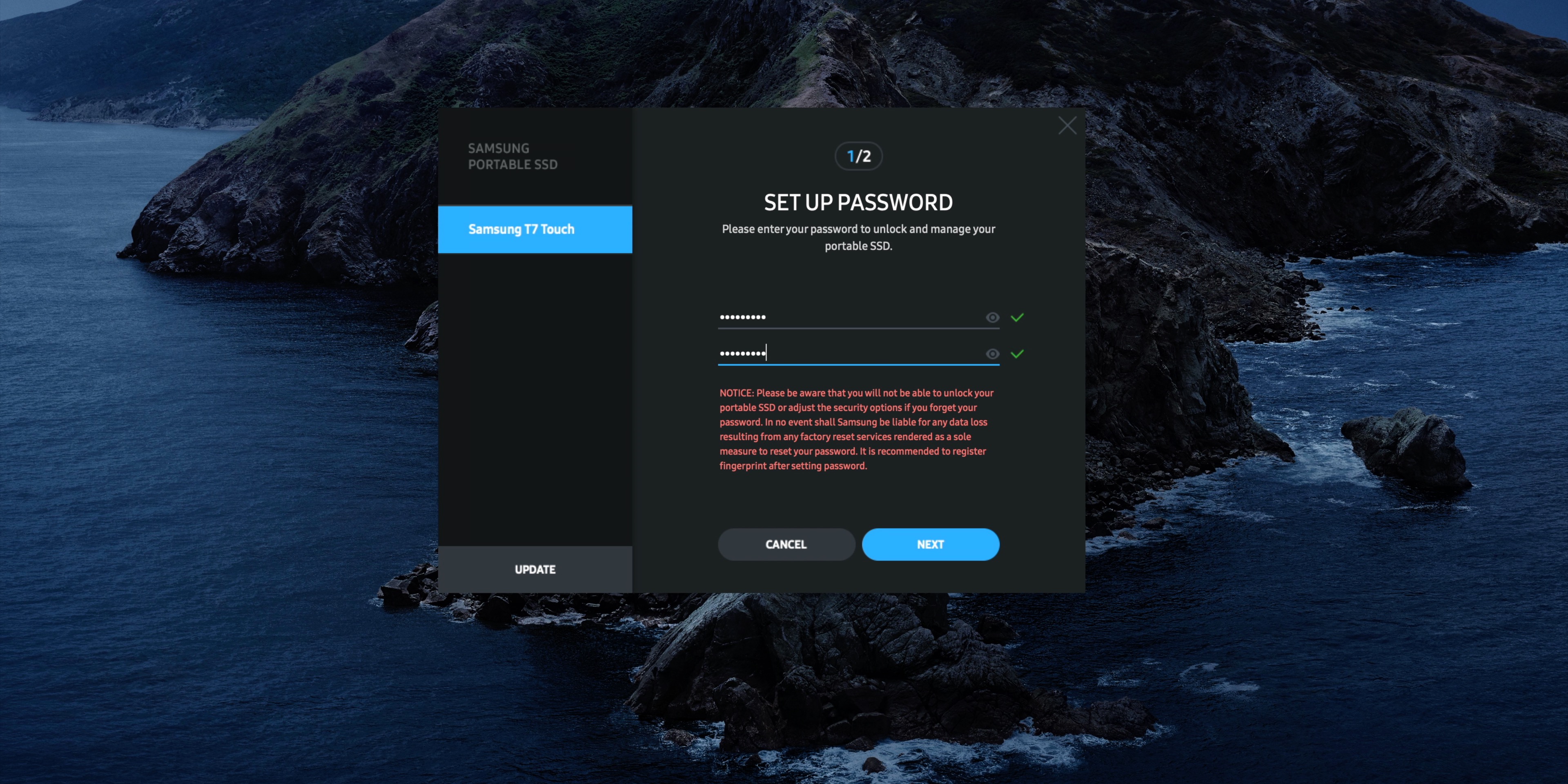
Upon installing the software and connecting the T7 Touch, you’ll be prompted to assign a password to the drive. Once a password is established, you’re allowed to toggle Security Mode, add up to four fingerprints, and toggle the fingerprint unlock feature.

Keep in mind that editing security mode options require the app and that you enter your password. In other words, you can not edit security mode options using only your fingerprints.
Fingerprint sensor
After establishing a password, you’ll be prompted to scan your fingerprint. The fingerprint sensor on the Samsung T7 is a square-shaped solid state sensor outlined by a blue LED activity indicator.
Motion LED
The blue LED ring that on the outside area of the fingerprint scanner is what Samsung dubs the ‘Motion LED’ status indicator. It’s essentially a fancy activity indicator that lets you know when the drive is being used, along with its current lock status.

When the drive is locked, the Motion LED indicator will slowly blink blue. When you place a valid fingerprint on the fingerprint sensor, the Motion LED indicator will stay solid blue prior to timing out after roughly 15 seconds of inactivity.

When data transfer occurs, the Motion LED indicator rotates clockwise and will timeout after 15 seconds of inactivity. Although helpful, I’ve never been a fan of bright activity indicators, especially when working in dark environments. Unlike the T5, this one takes brightness to a whole new level.
The good news is that the light goes off completely after a period of inactivity, but if you’re transferring large files, you’ll be on the receiving end of a blue LED light show.
Scanning your fingerprint
Scanning your fingerprint works similarly to setting up Touch ID on an iOS device. You simply touch the fingerprint multiple times at different angles with the same finger. A percentage indicator will let you know when the scan is completed. Afterward, you can add up to three additional fingerprints for a total of four.
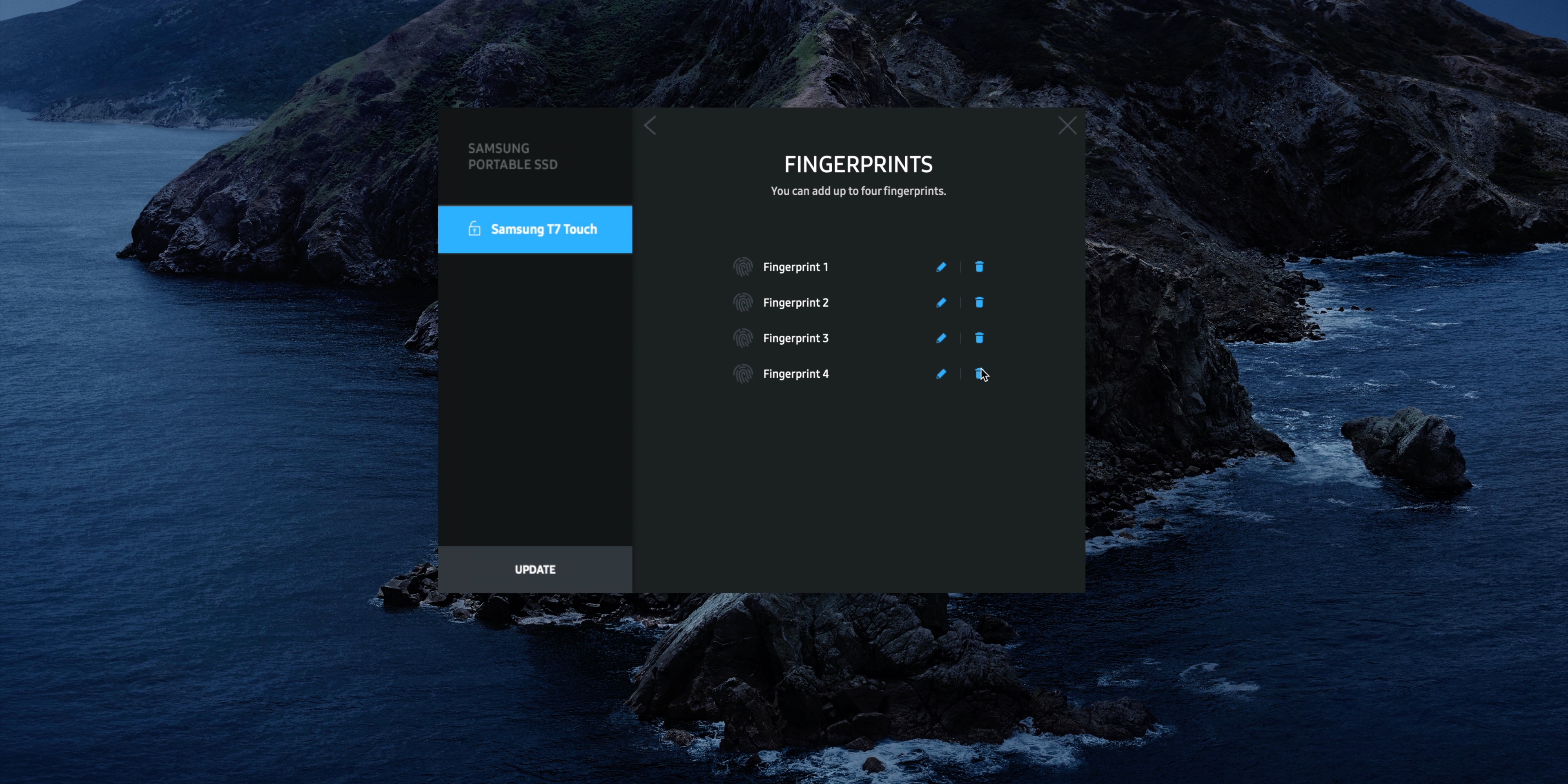
Fingerprint unlock can be toggled and individual fingerprints can be deleted via the Samsung Portable SSD app after confirming your password.
Overall I thought the fingerprint setup process worked pretty well. I can definitely see such a feature being useful, not just for keeping personal data secure but allowing multiple people to access such data securely via their own fingerprints.
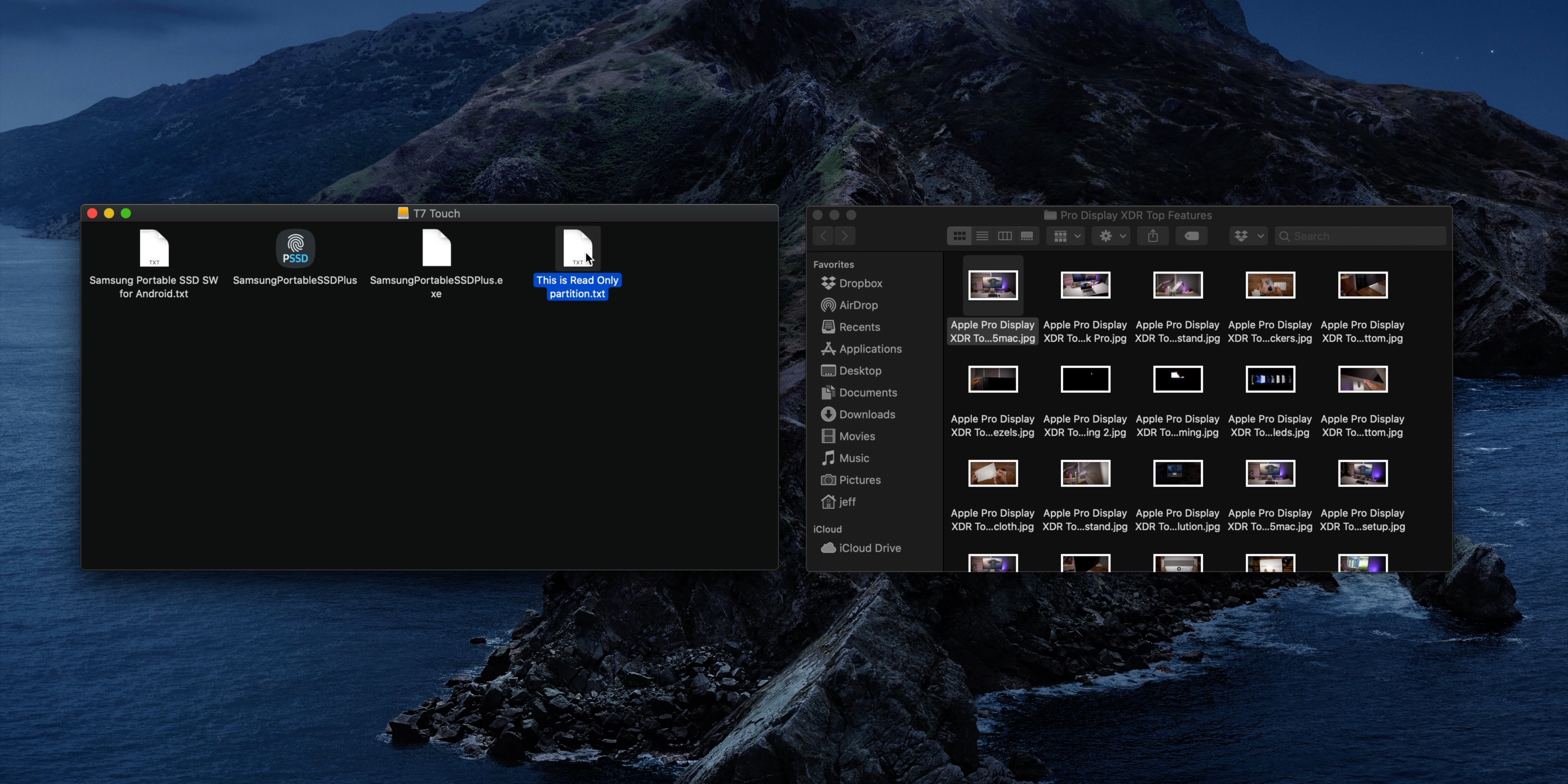
If you try to access files on the drive without first authenticating via a fingerprint scan or via your password, you’ll be unable to write or read from the drive. Instead, you’ll be presented with a message telling you that the drive is in read-only mode along with installation files for the apps that allow you to manage the security settings of the drive via password authentication.
Access files via fingerprint from any device, even without the app
What makes the Samsung T7 Touch’s fingerprint security work, though, is that once you have the fingerprints setup, you can authenticate on any device that can read the drive just by scanning your fingerprint.
You don’t have to install the app to access your files when connecting to a foreign Mac, PC, or even iPad Pro. Assuming fingerprint security is already set up and enabled, all you have to do is authenticate via your fingerprint, and the drive will unlock and allow read and write access. That’s pretty handy.
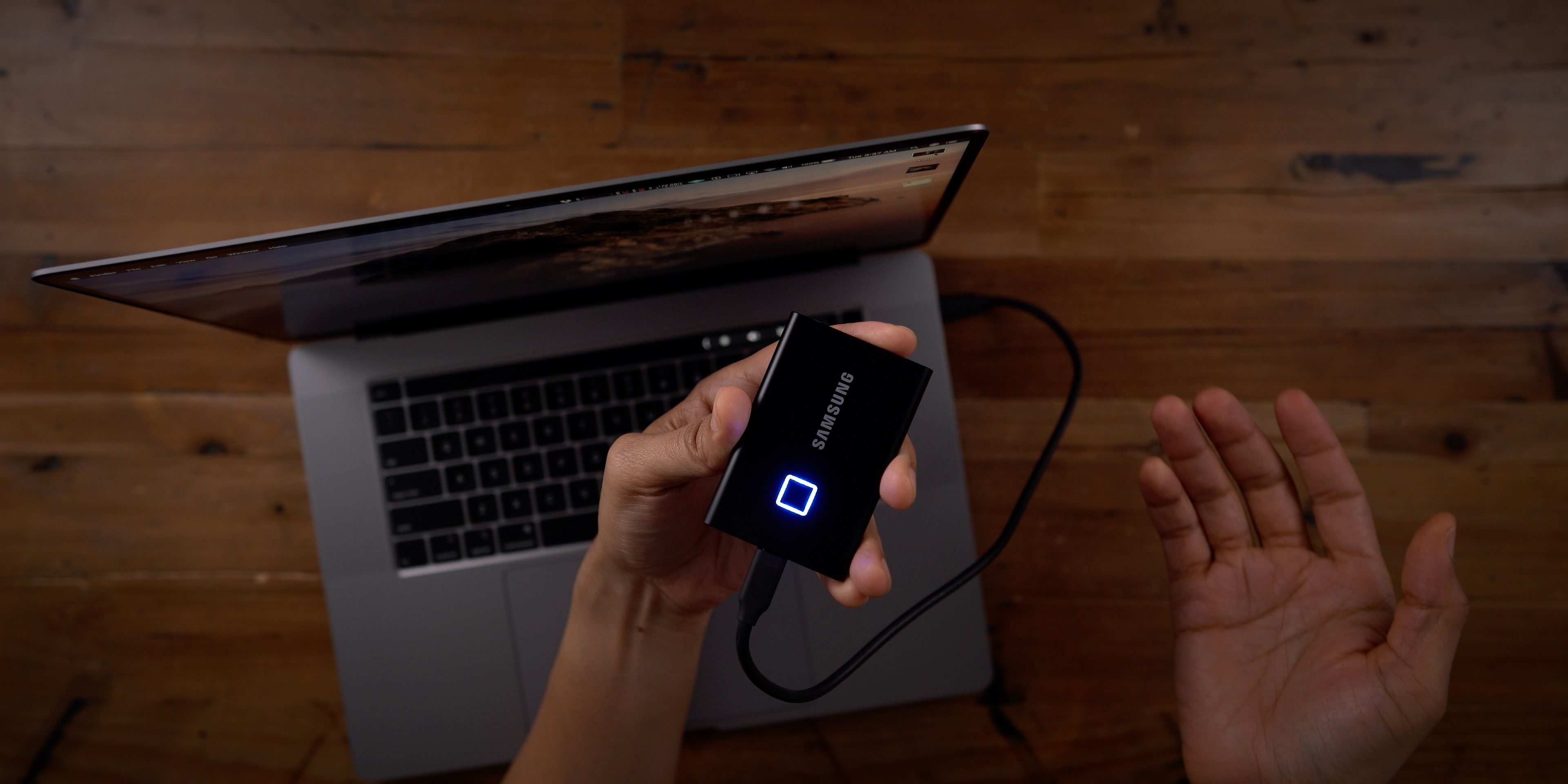
For example, when connecting to my 13-inch MacBook Pro, without Samsung’s software installed, I simply tap the fingerprint sensor to unlock the drive. The same goes when booting my Mac into Windows via Boot Camp. Since the drive is formatted as ExFat, a simple tap of the sensor with my registered finger allows me to access all my files.
With iPadOS 13, users can connect the Samsung T7 Touch directly to an iPad Pro via USB-C. Like macOS and Windows, once the drive is unlocked via a scan of your fingerprint, all files on the drive are accessible via the Files app.
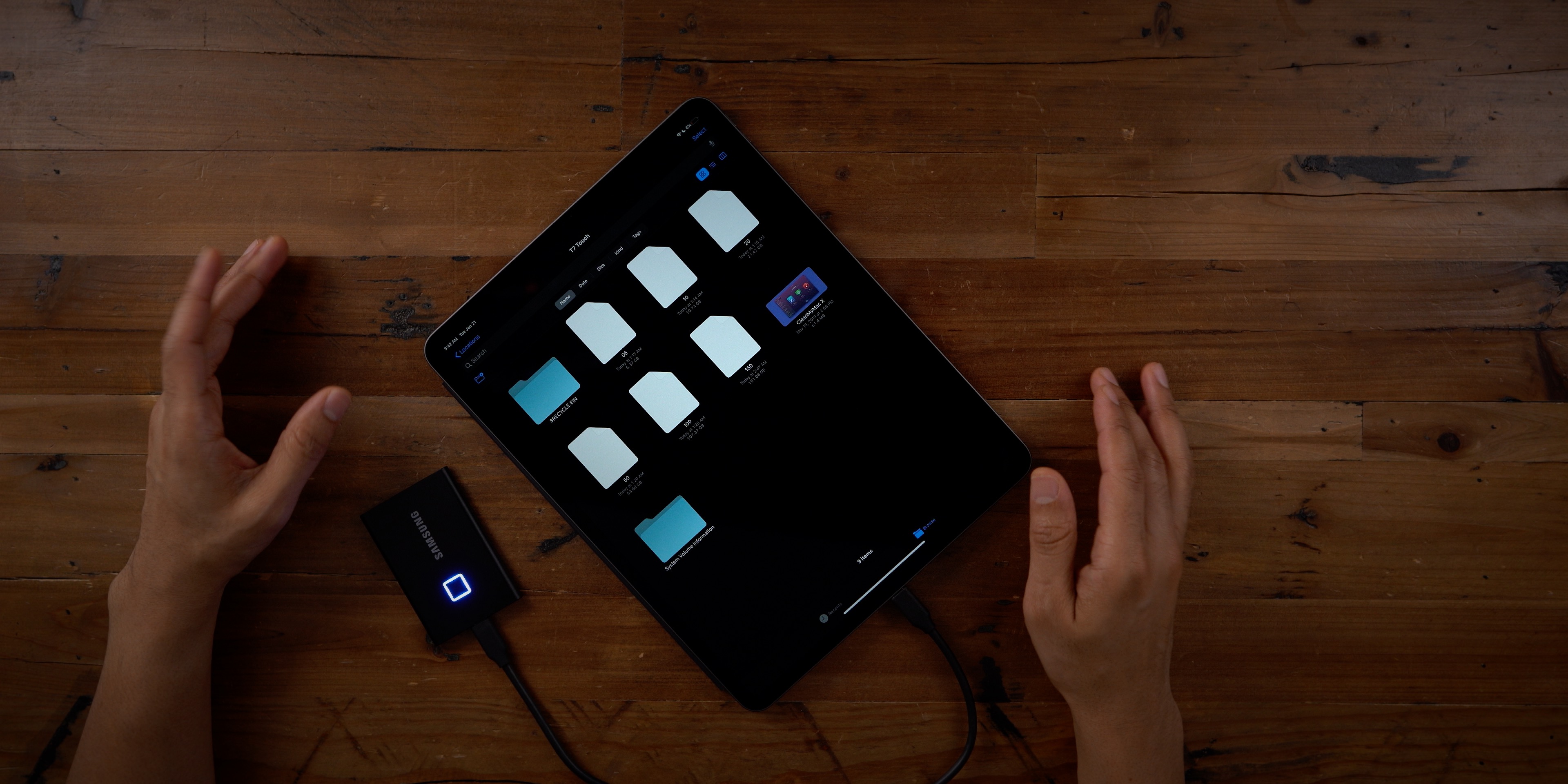
Of course, you don’t have to use fingerprint security, or any security for that matter, if you don’t want to, but it’s one of the main selling points of the T7 Touch. I think it’s a great idea for drives housing sensitive data, or when traveling where a drive is susceptible to loss or theft.
Speed differences
Outside of the conspicuous addition of a fingerprint sensor, the biggest new addition to the Samsung T7 Touch is the added speed thanks to embedded PCIe NVMe flash. Although the T5 enjoyed the same USB 10GB/s connectivity, it was locked in at 6Gb/s SATA speeds. The Samsung T7 Touch, on the other hand, features flash chips that can finally put the added headroom to good use, at least for a period of time.

The previous generation Samsung T5 SSD Benchmark
On paper, the Samsung T7 Touch is rated at close to twice as fast as the previous model, which boasted speeds up to 540MB/s read versus the T7’s 1050MB/s. Actual tests using Blackmagic Disk Speed Test utility on my 2019 16-inch MacBook Pro showcased a significant improvement with read speed results right around 900MB/s and write results around 800MB/s.
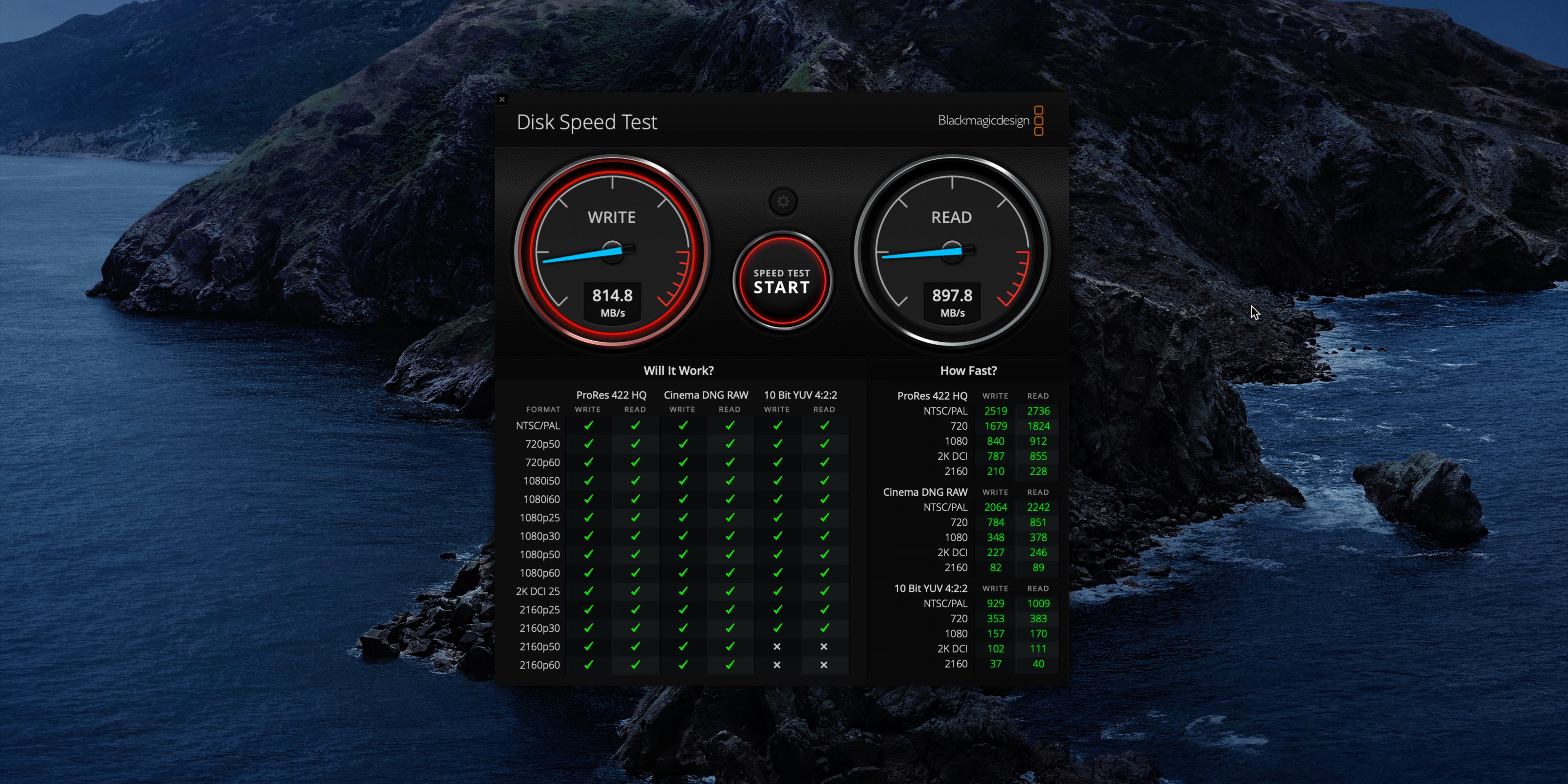
Benchmarking the Samsung T7 Touch SSD
Real-world benchmarks, such as simply copying a large file to or from the Samsung T7 Touch, can paint a slightly different picture, depending on the size of the file being transferred. For smaller files, the T7 Touch is demonstrably faster, but larger file transfers, especially those in the hundreds of gigabytes can actually be a bit slower in some circumstances. Granted, it’s not exactly a 1:1 comparison since my T7 Touch is only 500GB vs 1TB on my T5, but it gives you a good idea of what to expect.
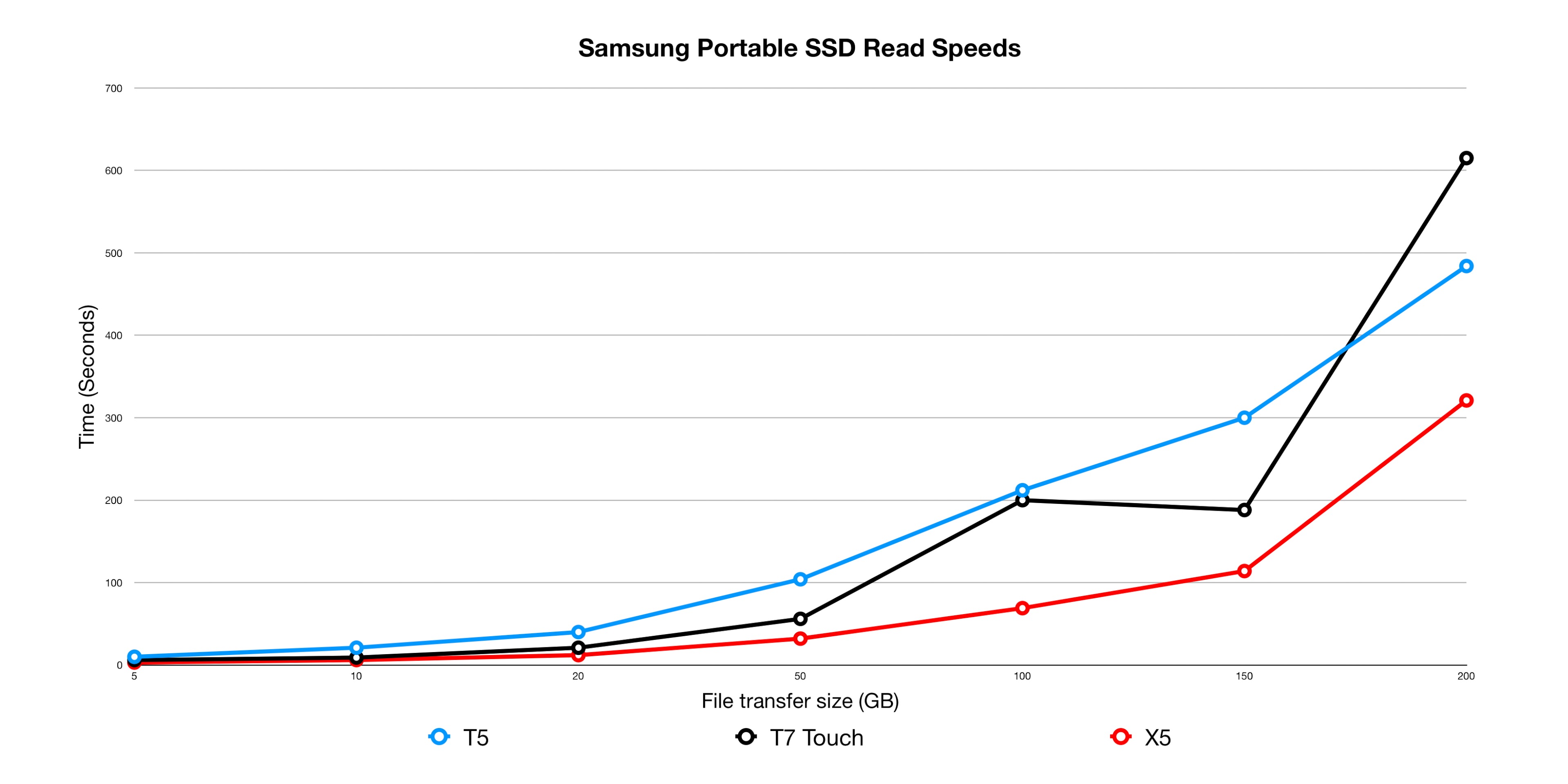
Large sustained transfers may induce throttling
Like prior portable Samsung NVMe SSDs, such as the Samsung X5 (review), the T7 Touch is subject to throttling once it reaches a certain temperature during a sustained file transfer operation. For smaller files, the speed increase will be readily apparent, but larger files that cause the drive’s flash media to heat up, which in turn activates throttling, making speeds come back down to earth for a period of time.
9to5Mac’s take
The Samsung Touch T7 is a worthy follow-up to the prior generation T5. Not only does it have built-in security via a hardware fingerprint sensor, but it’s also capable of being faster than the T5.

That all being said, the T7 will throttle when pushed hard, dropping transfer speeds when the drive gets too hot. This is something to keep in mind if you’re regularly transferring big data. But if the drive is just your everyday working drive, or even if you’re working with big video 4K video files, the Samsung T7 should be an all-around solid real-world performer.
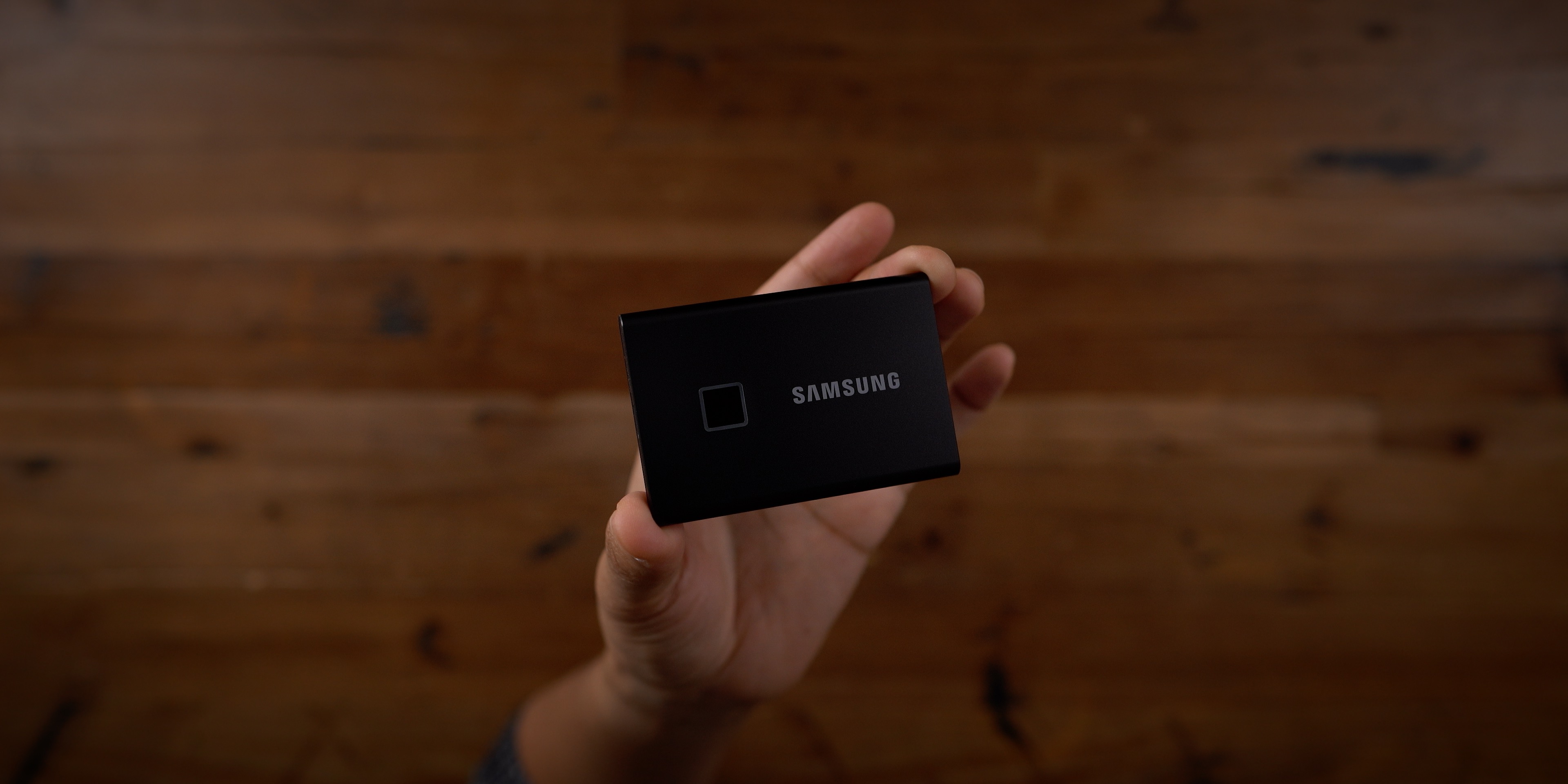
With that said, if speed is what you care about the most, there are faster drives available, like Samsung’s own Thunderbolt 3-enabled X5 Portable SSD. Although, like the T5 Touch, the X5 is also susceptible to throttling when pushed to its limits.
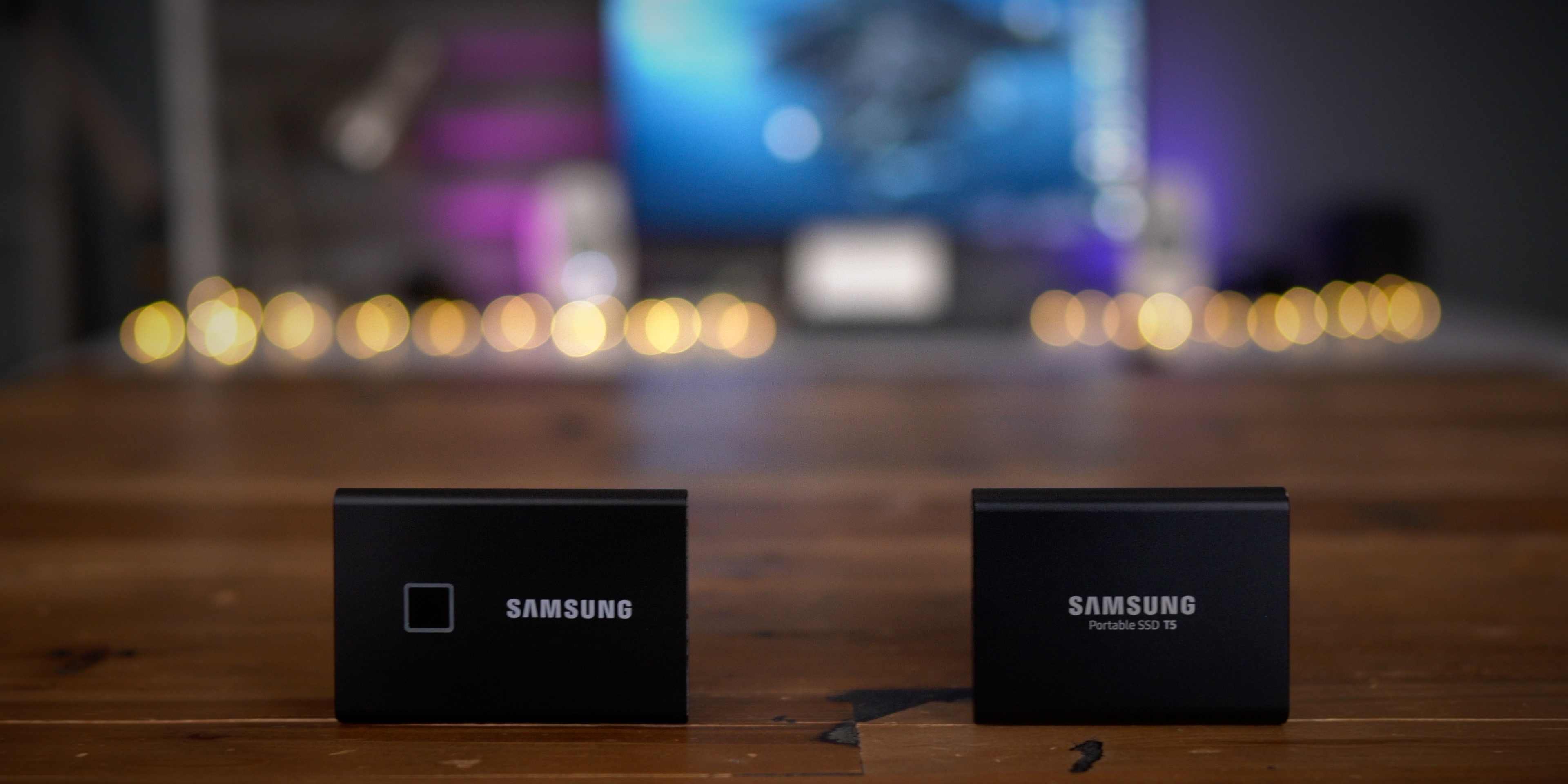
If you absolutely don’t want fingerprint security, be on the lookout for the direct follow up to the Samsung T5, the upcoming T7. The baseline T7 comes sans fingerprint security, which means it should also command a lesser price than the flagship Touch edition when it launches later this year.
What are your thoughts on Samsung’s latest USB-enabled Portable SSDs? Are you consider buying one? Would you use the built-in fingerprint security? Sound off down below in the comments with your thoughts.
